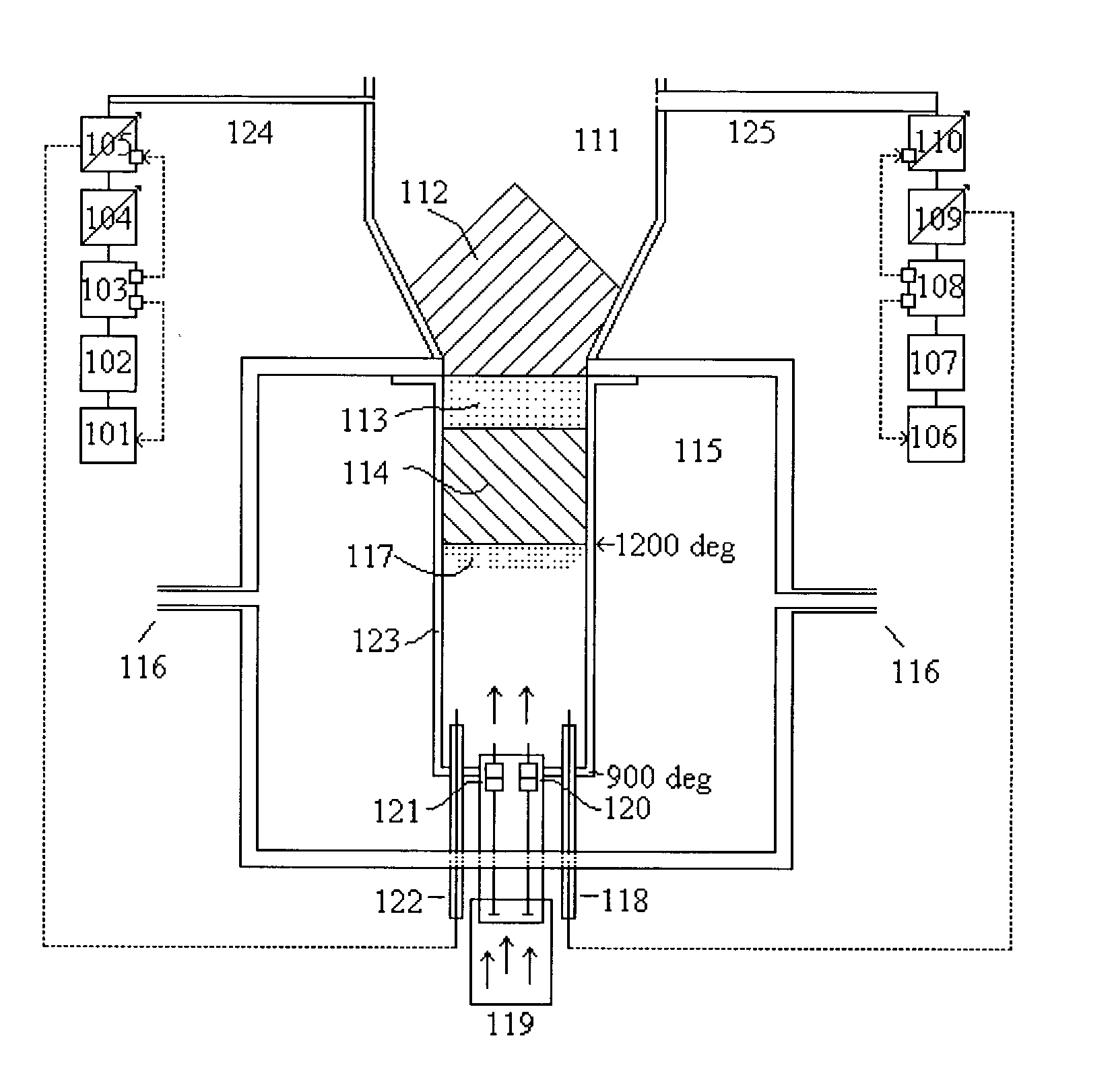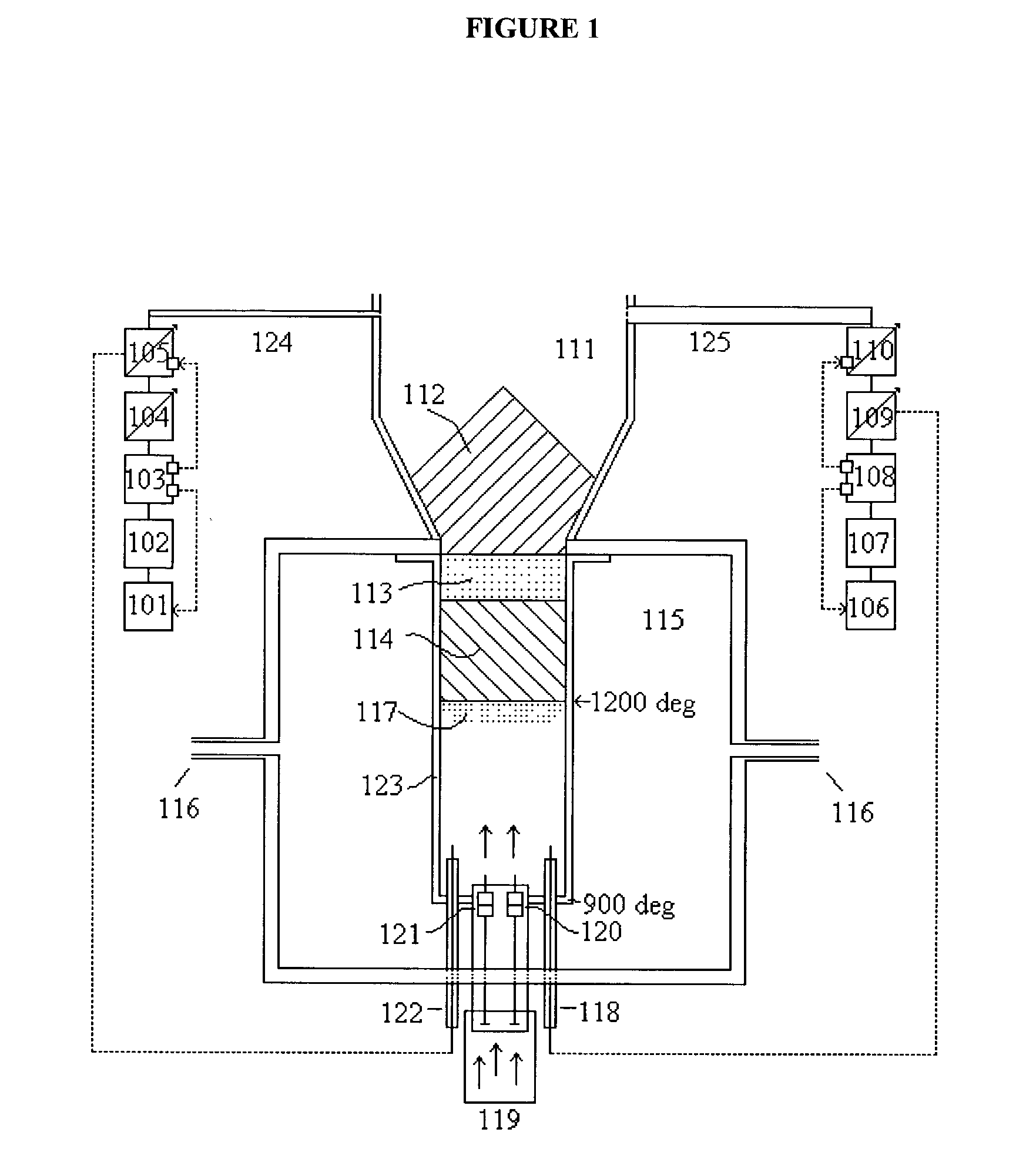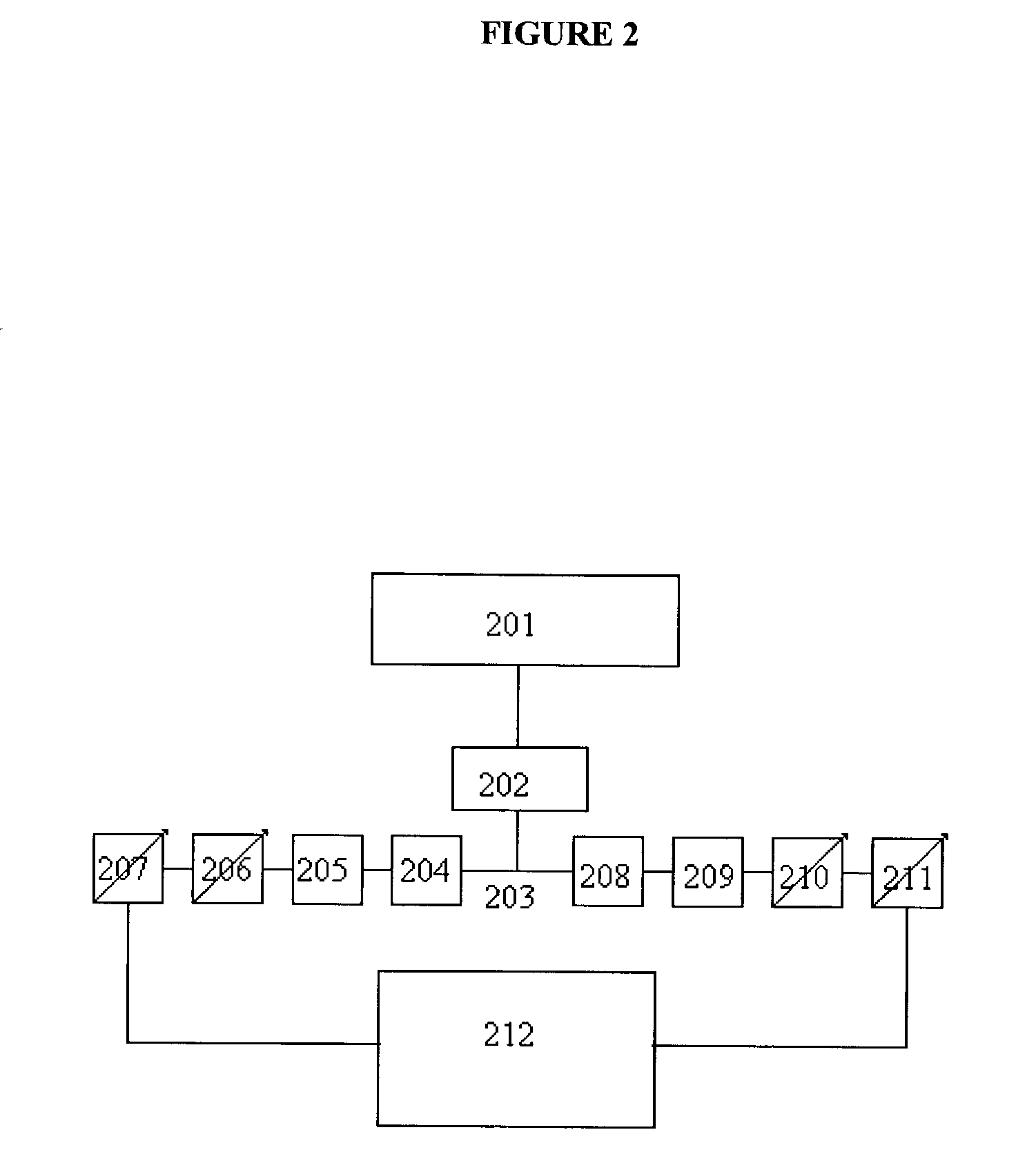Method for production of silica optical fiber preforms
a technology of silica and optical fiber, applied in glass making apparatus, manufacturing tools, instruments, etc., can solve the problems of difficult fabrication of cores or claddings with steep doping profiles, methods that require a step, and ultraviolet radiation-induced color centers, etc., to achieve the effect of efficient production of optical
- Summary
- Abstract
- Description
- Claims
- Application Information
AI Technical Summary
Benefits of technology
Problems solved by technology
Method used
Image
Examples
example 2
[0062] Production of a Preform with Cladding and Al and Er Doped Core
[0063] With the present invention, a preform can be manufactured that features a core whose refractive index is radially variable. The produced reflective cladding consists of fluorine-doped silica and the core consists of silica doped with aluminum and erbium. A gas mixture consisting of O.sub.2+SiCl.sub.4+C.sub.3F.sub.8+ErCl.sub.3(waterless vapor)+AlCl.sub.3(waterless vapor) is supplied to the microwave plasma zone via gas supply system 119. AlCl.sub.3 and ErCl.sub.3 vapors are supplied to the plasma from the closed silica containers 120 and 121, (with ErCl.sub.3 and AlCl.sub.3 powders) which are located under the microwave plasma at the 900.degree. C. temperature zone in the graphite tube 123. Condensation of ErCl.sub.3 and AlCl.sub.3 in the reaction zone during vapor transportation is avoided because the temperature increases around the supplying vapors in the plasma zone. The activator flow is determined by pr...
example 3
[0069] Preform Manufacture without Pulsed Generator 106
[0070] This alternative embodiment of the present invention presents a simpler device scheme for manufacturing activated optical fiber preforms, SiON core preforms, SiO.sub.2 rods doped by nitrogen and SiO.sub.2 rods doped by Al (Ge) and different types of REE (Er and so on). In this case the microwave power density on the rod face and in the microwave plasma will be lower (150-160 W / cm.sup.2) then in those embodiments that include a pulsed microwave generator. The deposition rate is approximately 1-1.5 g / min in this case. A diagram of this installation is shown in FIG. 2.
[0071] Continuous microwave generator 201 emits radiation at preferably 2450 MHz and 6 kW through ferrite circulator 202, which "protects" generator 201 from reflected microwave power, to power divider 203 which divides this power into two equal parts for 2 microwave energy channels which are divided by the ferrite circulators 204 and 208. The excitation proces...
example 4
[0074] The Method for Production of an SiON Rod for Use in Subsequent Manufacture of an Optical Fiber Preform
3 Microwave power (impulse), E.sub.01 wave, kW 7.5 Impulse duration, ms 1.0 Impulse repetition rates, Hz 100 Microwave power (continuous), H.sub.11 wave 0-4.5 with rotating polarization, kW Gas pressure, torr 15 Mutual gas flow, cm.sup.3 / min 12000 N.sub.2 flow, cm.sup.3 / min 6500 O.sub.2 flow, cm.sup.3 / min 1500 SiCl.sub.4 flow, cm.sup.3 / min 3800 Ar flow, cm.sup.3 / min 200 Silica rod diameter, mm 60 Rod face temperature, C. 1200 Rate of rod rotation, rev / min 100
[0075] The deposition rate of SiON glass is 3 g / min. SiON rod (60 mm diameter, 210 mm length, more than 2 kg weight) is fabricated for 12 hours of continuous deposition process.
PUM
| Property | Measurement | Unit |
|---|---|---|
| Volume | aaaaa | aaaaa |
| Time | aaaaa | aaaaa |
| Mass flow rate | aaaaa | aaaaa |
Abstract
Description
Claims
Application Information
 Login to View More
Login to View More - R&D
- Intellectual Property
- Life Sciences
- Materials
- Tech Scout
- Unparalleled Data Quality
- Higher Quality Content
- 60% Fewer Hallucinations
Browse by: Latest US Patents, China's latest patents, Technical Efficacy Thesaurus, Application Domain, Technology Topic, Popular Technical Reports.
© 2025 PatSnap. All rights reserved.Legal|Privacy policy|Modern Slavery Act Transparency Statement|Sitemap|About US| Contact US: help@patsnap.com



